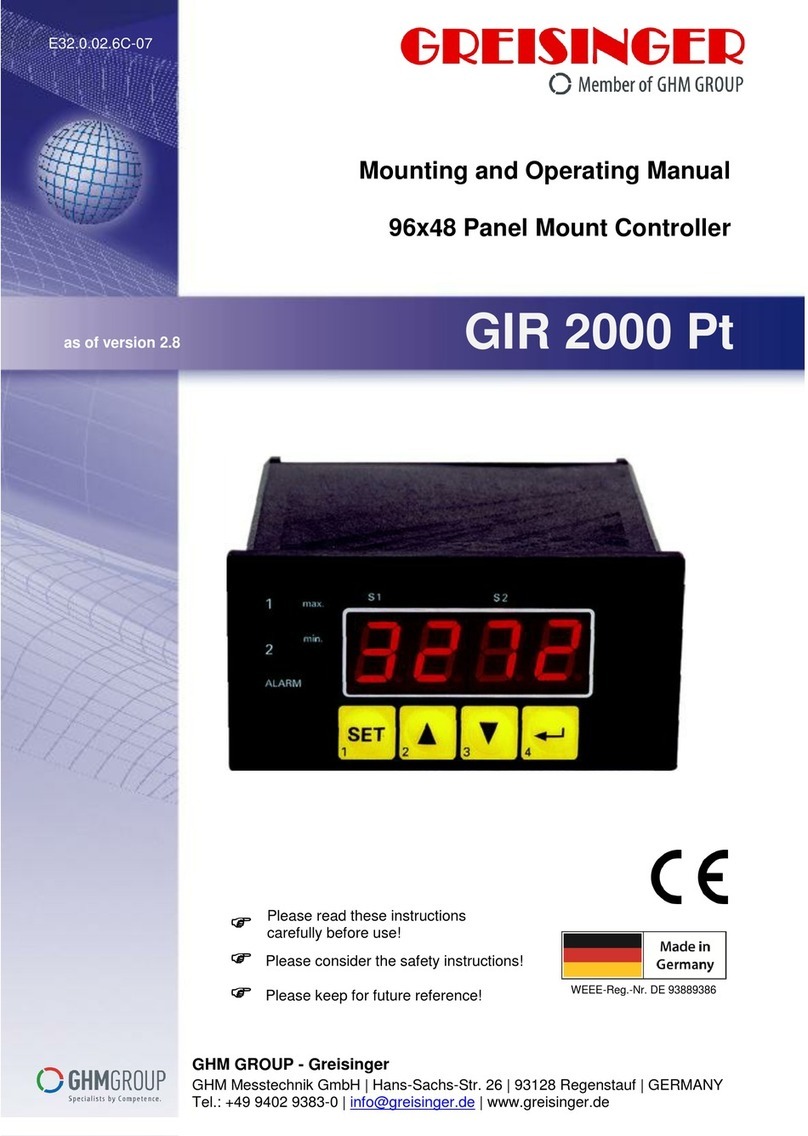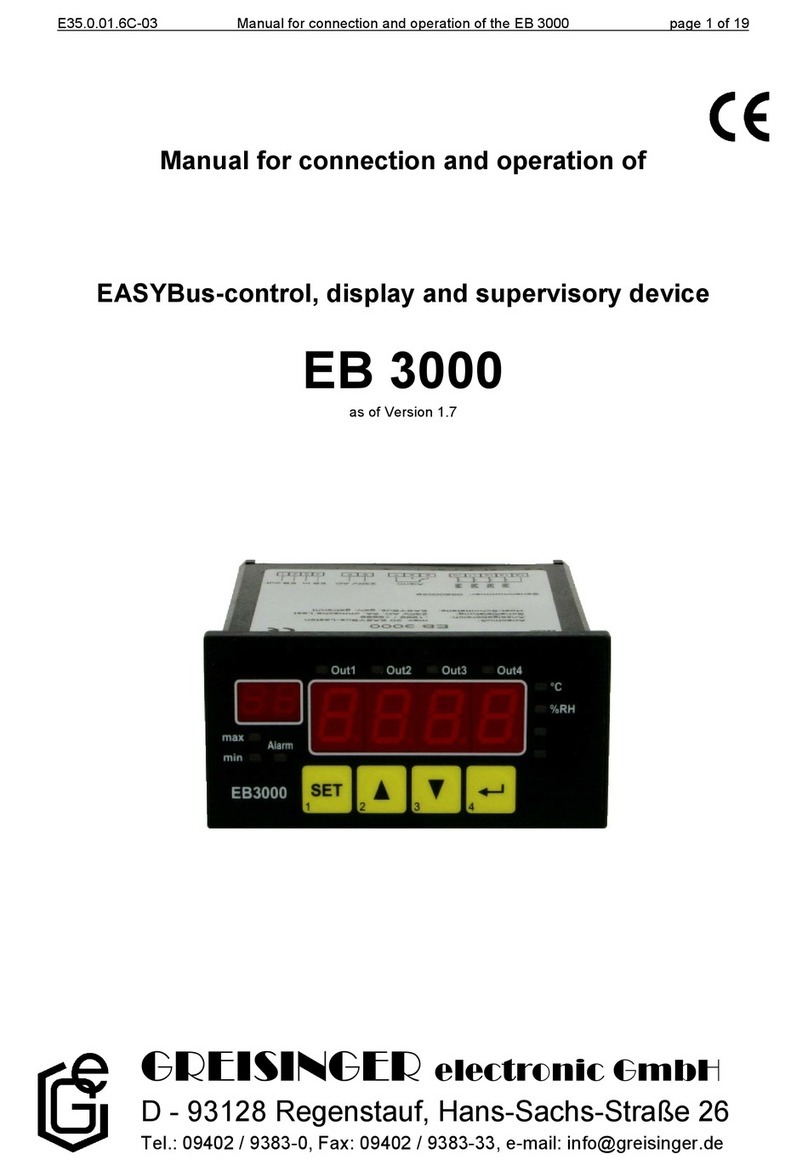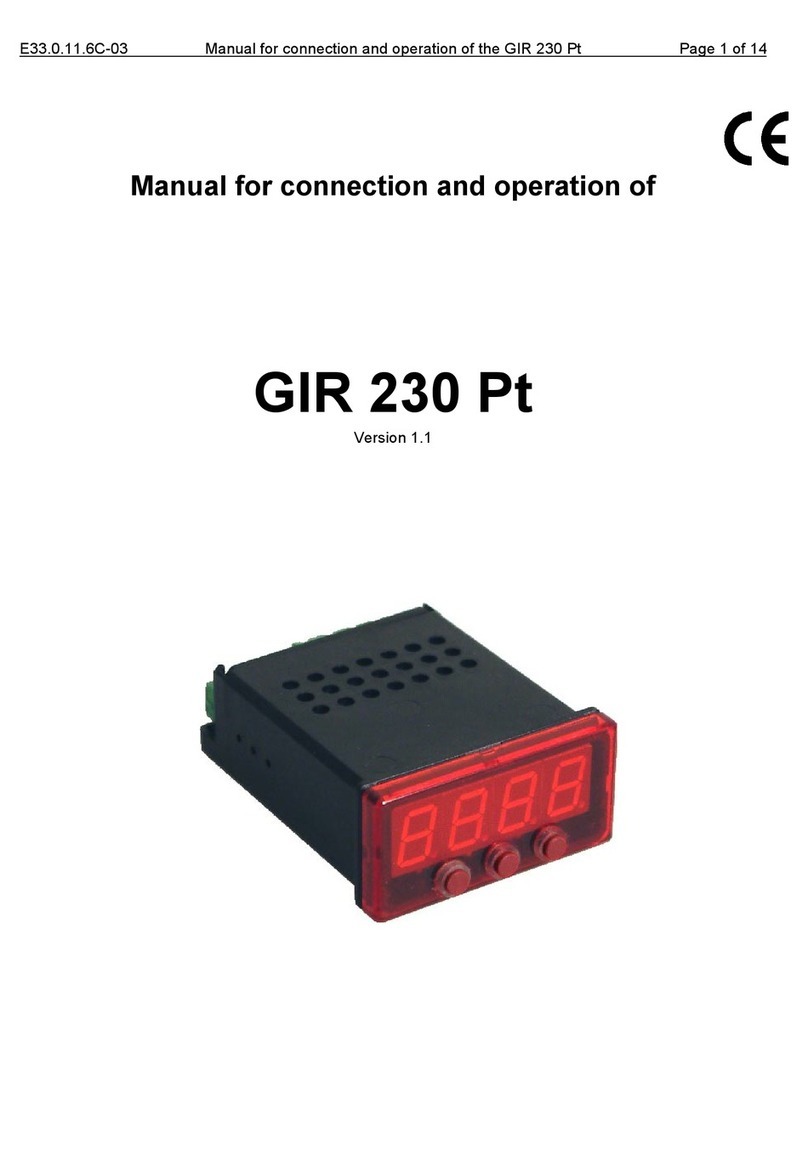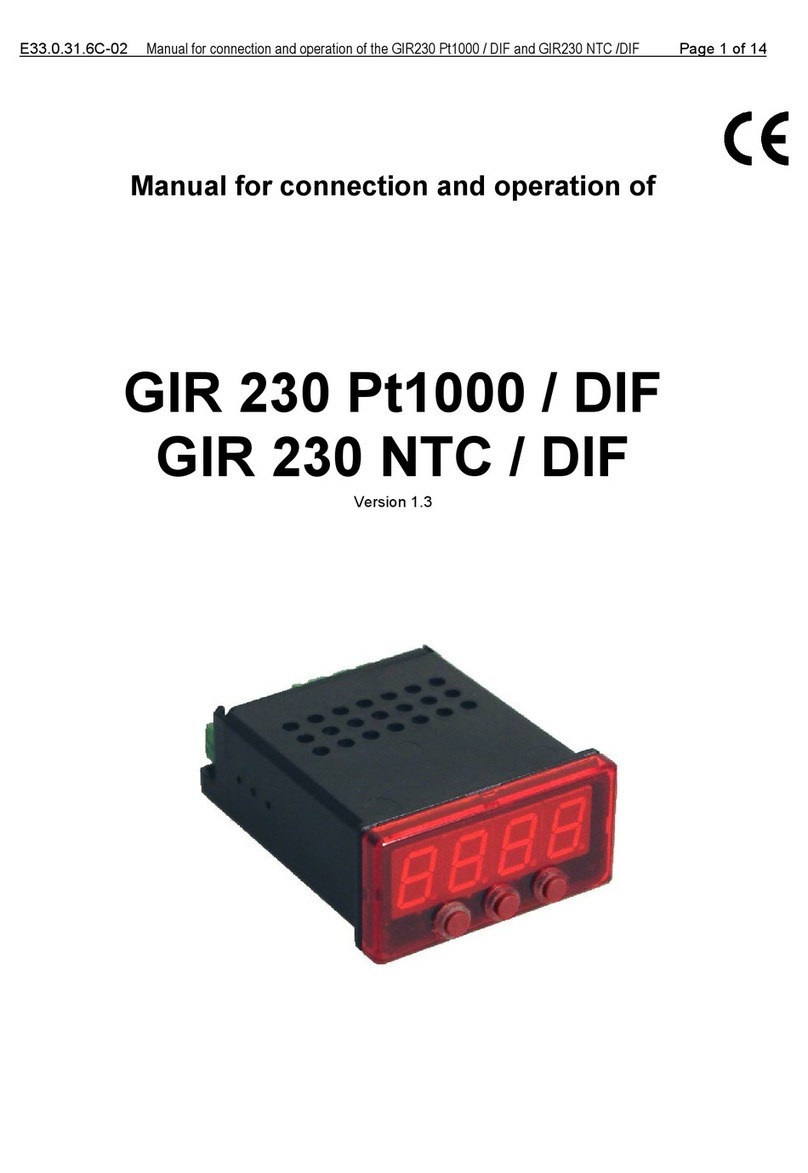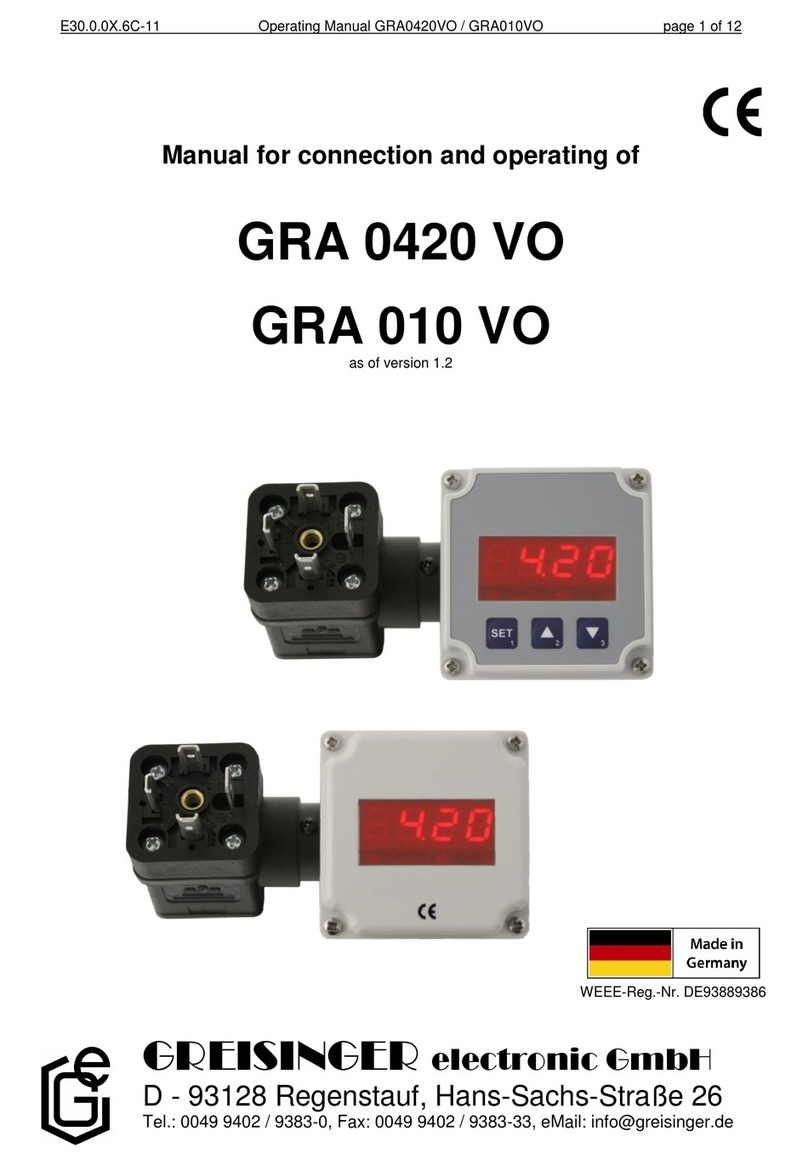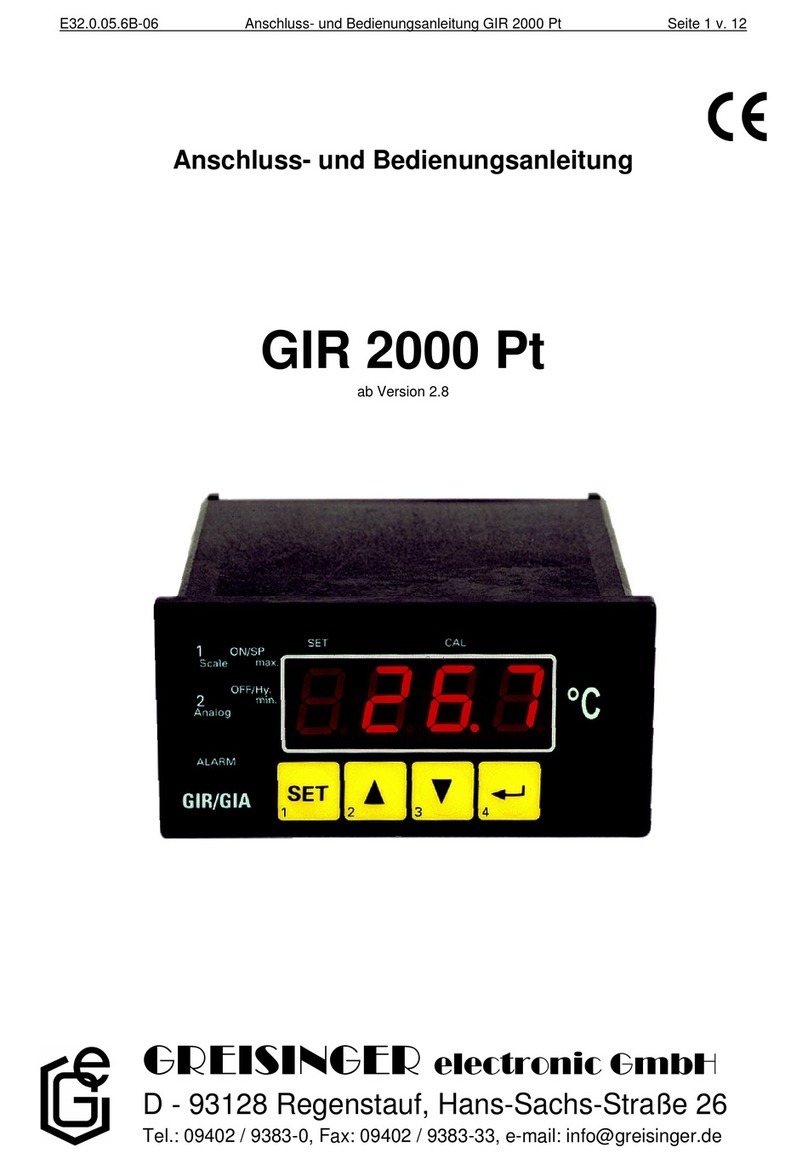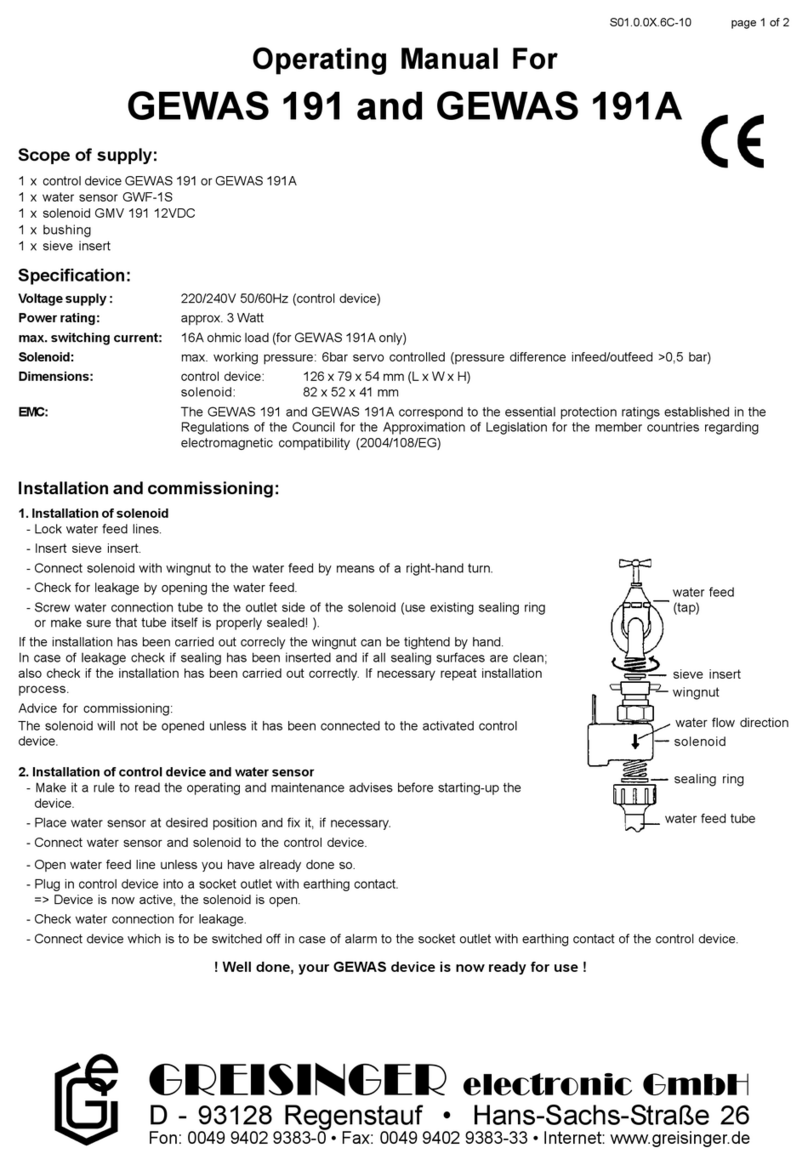E44.X.00.6C-03 Connection and operating manual GIR 300 page 2 of 28
Index
1GENERAL NOTE ......................................................................................................................................................3
2INTENDED USE ........................................................................................................................................................3
3SAFETY.....................................................................................................................................................................4
3.1 SAFETY SIGNS AND SYMBOLS.................................................................................................................................4
3.2 SAFETY GUIDELINES..............................................................................................................................................4
3.3 SKILLED PERSONNEL.............................................................................................................................................4
4ELECTRIC CONNECTION........................................................................................................................................5
4.1 TERMINAL ASSIGNMENT.........................................................................................................................................5
4.2 CONNECTION DATA ...............................................................................................................................................5
4.3 CONNECTION AN INPUT SIGNAL ..............................................................................................................................6
4.3.1 Connection a Pt 100 or Pt 1000 RTD probe or a thermocouple probe.......................................................6
4.3.2 Connecting a 4 - 20 mA transmitter in 2-wire-technology...........................................................................6
4.3.3 Connecting a (0)4 - 20 mA transmitter in 3-wire-technology.......................................................................6
4.3.4 Connecting a 0-1V, 0-2V or 0-10V transmitter in 3-wire-technology...........................................................7
4.3.5 Connecting a 0-1/2/10V or 0-50 mV transmitter in 4-wire-technology ........................................................7
4.3.6 Connecting a frequency- or rotation-signal .................................................................................................7
4.3.7 Connecting a counter signal........................................................................................................................9
4.4 CONNECTING SWITCHING OUTPUTS......................................................................................................................10
4.5 COMMON WIRING OF SEVERAL DEVICES................................................................................................................10
5CONFIGURATION...................................................................................................................................................11
5.1 SELECTING AN INPUT SIGNAL TYPE.......................................................................................................................11
5.2 MEASURING VOLTAGE OR CURRENT (0-50MV, 0-1V, 0-2V, 0-10V, 0-20MA, 4-20MA)............................................12
5.3 MEASURING TEMPERATURE (PT 100, PT 1000 RTD PROBES AND THERMOCOUPLES TYPE J, K, N, SOR T) .................................14
5.4 MEASURING OF FREQUENCY (TTL, SWITCHING-CONTACT).....................................................................................15
5.5 MEASURING OF ROTATION SPEED (TTL, SWITCHING-CONTACT) .............................................................................16
5.6 UP-/DOWNWARDS COUNTER................................................................................................................................17
5.7 INTERFACE MODE................................................................................................................................................19
5.8 SELECTION OF THE OUTPUT FUNCTION.................................................................................................................19
6SWITCHING POINTS AND ALARM-BOUNDARIES .............................................................................................21
6.1 2-POINT-CONTROLLER,3-POINT-CONTROLLER......................................................................................................22
6.2 2-POINT-CONTROLLER WITH ALARM FUCTION ........................................................................................................22
6.3 MINIMUM/MAXIMUM ALARM (INDIVIDUAL OR COMMON)............................................................................................23
7OFFSET- AND SLOPE-ADJUSTMENT..................................................................................................................24
8MIN-/MAX-VALUE MEMORY..................................................................................................................................25
9SERIAL INTERFACE..............................................................................................................................................25
10 ERROR CODES ......................................................................................................................................................25
11 SPECIFICATION .....................................................................................................................................................27
12 RESHIPMENT AND DISPOSAL.............................................................................................................................28
12.1 RESHIPMENT......................................................................................................................................................28
12.2 DISPOSAL INSTRUCTION......................................................................................................................................28
